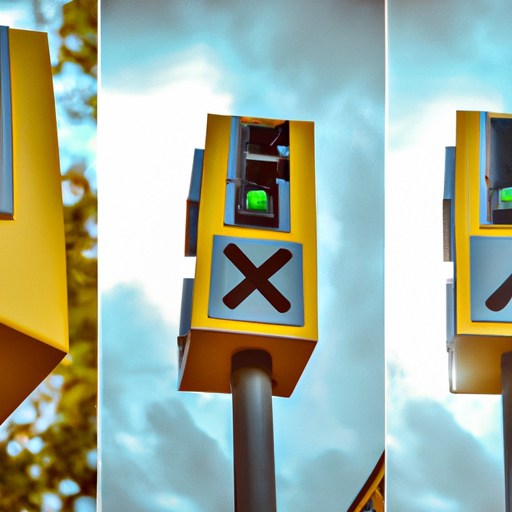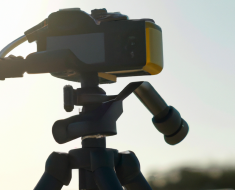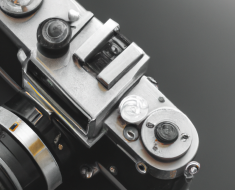“Precision starts with proper adjustment and zeroing of your optics.”
Importance of Properly Adjusting and Zeroing Your Optics
When it comes to shooting accurately, one of the most important factors to consider is properly adjusting and zeroing your optics. Whether you are using a rifle scope, red dot sight, or any other type of optic, ensuring that it is properly calibrated can make a world of difference in your shooting accuracy.
The first step in adjusting and zeroing your optics is to understand the importance of doing so. Without proper calibration, your shots may not hit where you intend them to, leading to missed targets and frustration. By taking the time to adjust and zero your optics correctly, you can ensure that your shots are on target every time.
One of the key benefits of properly adjusting and zeroing your optics is increased accuracy. When your optic is zeroed correctly, you can trust that your shots will land exactly where you aim them. This is essential for both hunting and target shooting, as hitting your mark with precision can mean the difference between success and failure.
Another benefit of adjusting and zeroing your optics is improved consistency. When your optic is properly calibrated, you can rely on it to perform consistently shot after shot. This can help you build confidence in your shooting abilities and improve your overall performance on the range or in the field.
To begin the process of adjusting and zeroing your optics, start by mounting the optic securely on your firearm. Make sure that it is properly aligned and tightened down to prevent any movement during shooting. Once the optic is mounted, you can begin the adjustment process.
The first step in adjusting your optics is to set the windage and elevation adjustments to their mechanical zeros. This will ensure that you have a baseline from which to make further adjustments. To do this, turn the adjustment dials all the way in one direction until they stop, then turn them back until they reach their zero position.
Next, you will need to adjust the windage and elevation settings to zero your optic at a specific distance. This distance will vary depending on your shooting preferences and the type of optic you are using. It is recommended to zero your optic at a distance that you commonly shoot at, such as 100 yards for rifles.
To zero your optic, fire a group of shots at your chosen distance and adjust the windage and elevation settings as needed to bring your shots into alignment with your point of aim. It may take several rounds of adjustments and test shots to achieve a perfect zero, so be patient and take your time during this process.
Once you have zeroed your optic at your desired distance, be sure to record the settings so that you can easily return to them in the future if needed. It is also a good idea to periodically check and re-zero your optics to ensure that they remain calibrated over time.
In conclusion, properly adjusting and zeroing your optics is crucial for achieving accuracy and consistency in shooting. By taking the time to calibrate your optic correctly, you can improve your shooting performance and increase your chances of hitting your mark every time. Remember to follow these steps carefully and practice regularly to maintain optimal performance from your optics.
Step-by-Step Guide to Zeroing Your Optics
When it comes to shooting accurately, having properly adjusted and zeroed optics is crucial. Whether you’re a hunter, a competitive shooter, or just someone who enjoys spending time at the range, taking the time to zero your optics will ensure that you hit your target with precision every time. In this article, we’ll walk you through the steps of adjusting and zeroing your optics so that you can improve your shooting accuracy.
The first step in zeroing your optics is to ensure that they are properly mounted on your firearm. Make sure that the scope rings are securely tightened and that the scope is aligned with the bore of the rifle. If the scope is not mounted correctly, no amount of adjustments will help you achieve an accurate shot.
Once your optics are properly mounted, it’s time to start adjusting them. Most scopes have windage and elevation adjustments that allow you to fine-tune your shot placement. To begin adjusting your optics, start by taking a few shots at a target to see where your shots are landing. If your shots are consistently hitting to one side or above or below the target, it’s time to make some adjustments.
When making adjustments to your optics, it’s important to remember that each click of the adjustment knob corresponds to a certain distance on the target. For example, on most scopes, one click will move the point of impact 1/4 inch at 100 yards. Keep this in mind as you make adjustments to ensure that you are moving the point of impact in the right direction.
To adjust for windage, which is left and right movement of the bullet’s point of impact, turn the windage adjustment knob in the direction you want your shots to move. For example, if your shots are hitting consistently to the right of the target, turn the windage knob counterclockwise to move the point of impact to the left.
Elevation adjustments control up and down movement of the bullet’s point of impact. To adjust for elevation, turn the elevation adjustment knob in the direction you want your shots to move. If your shots are consistently hitting above the target, turn the elevation knob counterclockwise to move the point of impact down.
After making windage and elevation adjustments, it’s time to zero your optics. Zeroing your optics means adjusting them so that your shots hit exactly where you aim. To zero your optics, take a few more shots at a target and make any necessary adjustments until your shots consistently hit where you want them to.
Once you have zeroed your optics, it’s important to test them regularly to ensure that they remain properly adjusted. Changes in temperature, humidity, or even just bumping your rifle can cause your optics to become unzeroed. By regularly testing and adjusting your optics, you can ensure that you continue to shoot accurately.
In conclusion, properly adjusting and zeroing your optics is essential for shooting accurately. By following these steps and taking the time to fine-tune your optics, you can improve your shooting accuracy and hit your targets with precision every time. So grab your rifle, head out to the range, and start adjusting and zeroing those optics!
Common Mistakes to Avoid When Adjusting Your Optics

When it comes to shooting accurately, having properly adjusted and zeroed optics is crucial. Whether you are a hunter, competitive shooter, or just enjoy hitting the range, knowing how to adjust and zero your optics is essential for hitting your target consistently. However, there are common mistakes that shooters often make when adjusting their optics that can lead to frustration and missed shots. In this article, we will discuss these common mistakes and provide tips on how to avoid them.
One of the most common mistakes that shooters make when adjusting their optics is not reading the user manual. While it may seem like a simple task, each optic is different and requires specific adjustments to zero properly. By taking the time to read the user manual, you can ensure that you are making the correct adjustments for your particular optic.
Another mistake that shooters often make is not properly securing their optic to their firearm. If your optic is loose or not properly mounted, it can move around during shooting, causing your shots to be off target. Make sure that your optic is securely mounted to your firearm before making any adjustments.
Additionally, shooters often make the mistake of adjusting their optic too quickly. It is important to make small adjustments and test your zero after each adjustment. This will help you fine-tune your zero and ensure that you are making the correct adjustments.
Another common mistake that shooters make when adjusting their optics is not using the proper tools. Many optics come with specific tools for making adjustments, such as a screwdriver or Allen wrench. Using the proper tools will help you make accurate adjustments without damaging your optic.
One of the biggest mistakes that shooters make when adjusting their optics is not taking into account environmental factors. Wind, temperature, and humidity can all affect how your bullet travels downrange. Before adjusting your optic, take these factors into consideration and make adjustments accordingly.
Finally, one of the most common mistakes that shooters make when adjusting their optics is not practicing proper shooting fundamentals. Proper grip, stance, and trigger control are all essential for shooting accurately. Make sure that you are practicing these fundamentals while adjusting your optic to ensure that you are hitting your target consistently.
In conclusion, properly adjusting and zeroing your optics is essential for shooting accurately. By avoiding these common mistakes and following the tips provided in this article, you can ensure that you are hitting your target consistently. Remember to read the user manual, secure your optic properly, make small adjustments, use the proper tools, consider environmental factors, and practice proper shooting fundamentals. By doing so, you will be well on your way to becoming a more accurate shooter.
Tips for Maintaining Zero on Your Optics
When it comes to shooting accurately, having properly adjusted and zeroed optics is essential. Whether you’re using a rifle, shotgun, or even a handgun, ensuring that your optics are set up correctly can make a world of difference in your accuracy and overall shooting performance. In this article, we’ll discuss some tips for maintaining zero on your optics so you can consistently hit your target with confidence.
First and foremost, it’s important to understand what zeroing your optics actually means. Zeroing refers to aligning the point of impact of your firearm with the reticle of your scope or red dot sight at a specific distance. This ensures that when you aim at a target, the bullet will strike where you intended it to. Properly zeroing your optics requires careful adjustment of both windage (horizontal) and elevation (vertical) settings to compensate for bullet drop and drift.
To start the zeroing process, you’ll need to set up a target at a known distance. Most shooters prefer to zero their optics at 100 yards, as this is a common standard for rifle shooting. Once you have your target set up, take a few shots to establish a group on the paper. This will give you an idea of where your bullets are hitting in relation to where you’re aiming.
Next, adjust your windage and elevation settings accordingly to move the point of impact towards the center of the target. Most scopes and red dot sights have turrets or dials that allow you to make precise adjustments in MOA (Minutes of Angle) or MILs (Milliradians). Make small adjustments and shoot another group to see how your adjustments have affected the point of impact.
It’s important to remember that zeroing your optics is not a one-and-done process. Factors such as temperature, altitude, ammunition type, and even how tightly you secure your optic mount can all affect your zero. Regularly checking and adjusting your zero is crucial for maintaining consistent accuracy.
One tip for maintaining zero on your optics is to keep detailed records of your adjustments. Note down the number of clicks you make on each turret when zeroing, as well as any environmental factors that may have influenced your shots. This way, if you ever need to re-zero your optics or troubleshoot accuracy issues, you’ll have a reference point to work from.
Another important aspect of maintaining zero on your optics is proper care and maintenance. Keep your optics clean and free from debris that could obstruct the reticle or lenses. Store them in a protective case when not in use to prevent damage from bumps or knocks.
In conclusion, properly adjusting and zeroing your optics is crucial for achieving accurate shooting performance. By following these tips for maintaining zero on your optics, you can ensure that your shots consistently hit their mark with precision and confidence. Remember to regularly check and adjust your zero, keep detailed records of adjustments, and take good care of your optics to maximize their effectiveness on the range or in the field.
Benefits of Having Properly Adjusted and Zeroed Optics
Properly adjusting and zeroing your optics is crucial for achieving accuracy and precision in shooting. Whether you are a hunter, competitive shooter, or just enjoy target practice, having your optics dialed in correctly can make a world of difference in your shooting performance. In this article, we will discuss the benefits of having properly adjusted and zeroed optics and provide some tips on how to achieve this.
One of the main benefits of having properly adjusted and zeroed optics is improved accuracy. When your optics are not properly adjusted, your shots may not hit where you intended them to. This can be frustrating and lead to missed opportunities in hunting or competition. By taking the time to adjust and zero your optics, you can ensure that your shots are on target every time.
Another benefit of properly adjusted and zeroed optics is increased confidence in your shooting abilities. When you know that your optics are dialed in correctly, you can approach each shot with confidence knowing that you have done everything possible to ensure a successful outcome. This confidence can translate into improved performance and better results overall.
Properly adjusted and zeroed optics can also help you save time and ammunition. When your optics are not properly adjusted, you may find yourself wasting time and ammo trying to figure out why your shots are off target. By taking the time to properly adjust and zero your optics, you can eliminate these frustrations and focus on improving your shooting skills instead.
Now that we have discussed some of the benefits of having properly adjusted and zeroed optics, let’s talk about how to achieve this. The first step in adjusting your optics is to ensure that they are mounted securely on your firearm. Loose mounts can cause your optics to shift during recoil, leading to inaccurate shots. Once you have confirmed that your optics are securely mounted, it’s time to start adjusting them.
Start by setting your magnification to the desired level and then focus the reticle using the diopter adjustment. Next, adjust the windage and elevation turrets to center the reticle on the target at a known distance. Once you have achieved this, it’s time to zero your optics.
To zero your optics, shoot a group of three shots at a target at your desired distance. Adjust the windage and elevation turrets as needed to move the group of shots to the center of the target. Repeat this process until your shots consistently hit where you aim.
In conclusion, properly adjusting and zeroing your optics is essential for achieving accuracy, precision, and confidence in shooting. By taking the time to ensure that your optics are dialed in correctly, you can improve your shooting performance and enjoy better results overall. So next time you head out to the range or into the field, make sure that your optics are properly adjusted and zeroed for success.





